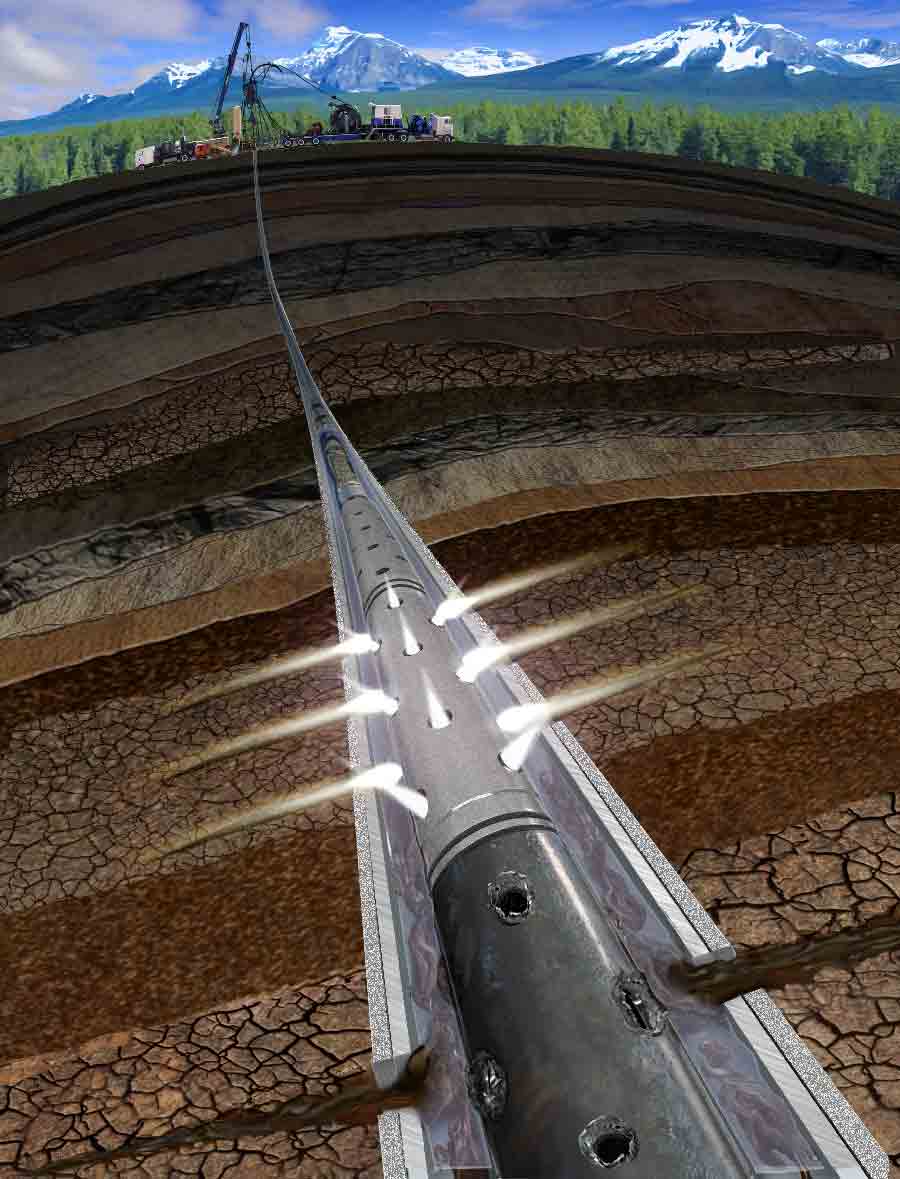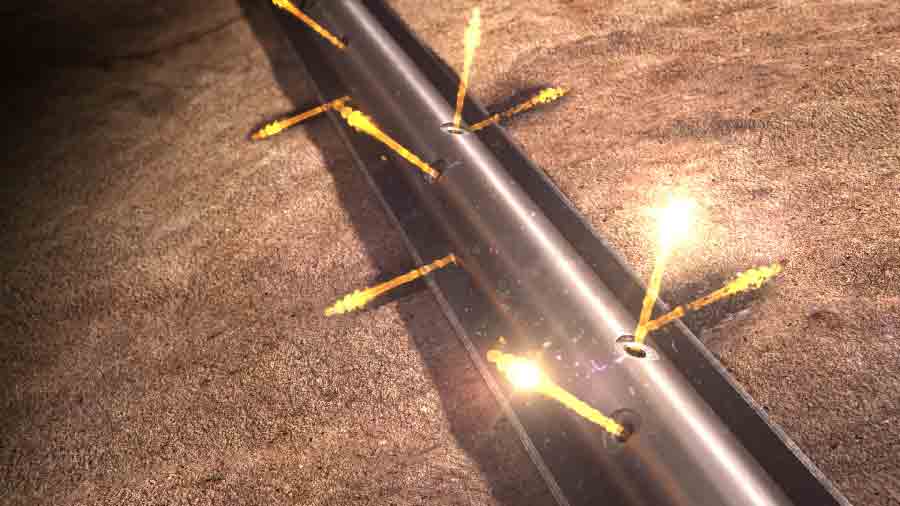CT Perforating
Streamline perforating while improving safety and reliability

Endure greater tensile and compressive forces when perforating highly deviated and horizontal wells
While known for being flexible, coiled tubing (CT) also delivers a rigidity and strength enabling greater tensile and compressive force endurance, which is a major operational advantage when perforating in highly deviated and horizontal wells or with longer gun strings. Additional gains in depth control are available by integrating a casing collar locator and gamma ray detector.
To ensure target zone coverage, ACTive Perf CT real-time perforating service is available for single-run perforating with accurate depth control, hydrostatic balance control, and avoidance of formation damage, formation fluid invasion, and formation sanding. The service can be deployed with other ACTive services tools to provide operators with additional information.
Perform live well perforating
CT perforating is ideal for live wells. Pressure control techniques are used to run long gun strings and either drop off or retrieve the guns without having to kill the well.
Improve subsea well perforating
In subsea wells, the subsea lubricator defines the length of gun that can be run. With other wells, the surface riser or surface lubricator valve determines the length of gun. CIRP completion insertion and removal under pressure equipment can be used in conjunction with CT to deploy and retrieve guns under pressure.


Achieve depleted well perforating
In depleted wells where drawdown is insufficient, nitrogen can be circulated at convenience to lighten the overall fluid column, increasing the drawdown at the zone of interest. The resulting pressure differential is similar to that produced by gas lift systems.
Widen options for gun activation
There are several ways to activate guns run with CT, including
- hydraulic delay firing heads
- drop ball firing heads
- eFire-CT coiled tubing–deployed firing head
- the use of circulation rates
- electrically, with stiff-wire CT, which uses standard wireline correlation tools.
Hydraulic CT enables stimulation fluids to be pumped without the risk of damaging a wireline cable.
The pump-over specialty gun is used during fracture operations in horizontal wells to save a cleanout trip between fracturing and perforating the next interval. It allows circulation through a special sleeve on the outside of the gun to the bottom of the string.
Perforating Systems
CT real-time perforating systems
-

ACTive Perf
CT real-time perforating serviceEnsure target zone coverage with selective perforating, and achieve accurate depth control in a single run.
-

ACTive Plug & Perf
CT real-time plug setting and perforating systemEliminate the need for ball drop, pressure pulse, and dependence on pumping fluid for gun detonation.
Firing Systems
Engineered systems optimized for the gun and charge combination
-

ACTive OptiFIRE
CT real-time selective perforating and activation systemActivate up to 10 times with precise downhole depth and hydrostatic pressure control—all in a single run.
-

eFire-CT
Coiled tubing–deployed electronic firing headMore efficiently and economically perform a wide range of downhole explosive operations.
-

BCF
Ball-activated firing headUse in guns 49.9 mm [1.69 in] or smaller in diameter.
-

CBF
Circulation ball drop–activated firing headAccommodate various CT dimensions and gun sizes while remaining insensitive to water-hammer effects and vertical drops.
Perforating Tools
Additional equipment and accessories
-

Vantage
Modular CT logging head systemSave rig-up and operational time with standardized e-line coiled tubing connectivity.
-

WXAR
Automatic gun release with X-Tools technologyAutomatically drop perforating guns at the instant of detonation.
-

CIRP
Completion insertion and removal under pressure equipmentInsert and retrieve long perforating gun strings under wellhead pressure when the surface pressure control equipment is shorter than the gun string.
-

Pressure Deployment CT System
Optimized equipment for executing long-BHA operationsImprove operational efficiency and eliminate runs by deploying long BHA strings rapidly and without the HSE risks associated with conventional bar deployment.
